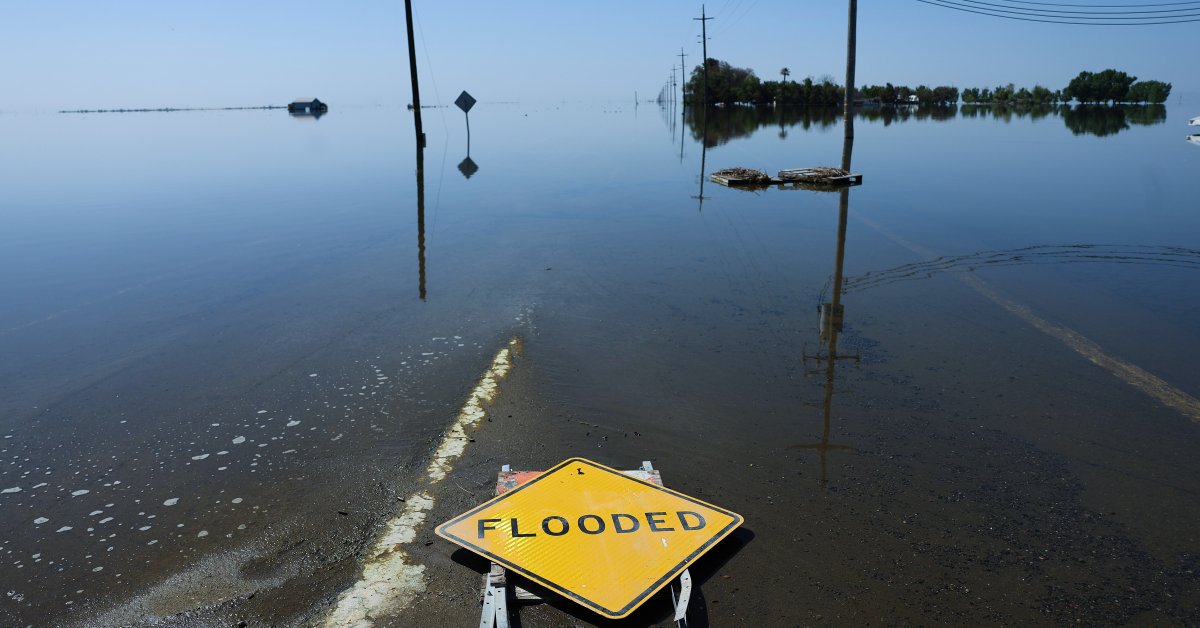The Rising Tide Of Extreme Weather: Understanding The Frequency Of "100-Year" Storms

Welcome to your ultimate source for breaking news, trending updates, and in-depth stories from around the world. Whether it's politics, technology, entertainment, sports, or lifestyle, we bring you real-time updates that keep you informed and ahead of the curve.
Our team works tirelessly to ensure you never miss a moment. From the latest developments in global events to the most talked-about topics on social media, our news platform is designed to deliver accurate and timely information, all in one place.
Stay in the know and join thousands of readers who trust us for reliable, up-to-date content. Explore our expertly curated articles and dive deeper into the stories that matter to you. Visit Best Website now and be part of the conversation. Don't miss out on the headlines that shape our world!
Table of Contents
The Rising Tide of Extreme Weather: Understanding the Frequency of "100-Year" Storms
The term "100-year storm" conjures images of catastrophic flooding, devastating winds, and widespread destruction. But in a world grappling with climate change, these once-rare events are becoming increasingly frequent, challenging the very definition of their rarity and demanding a reassessment of our preparedness strategies. This isn't just about higher insurance premiums; it's about the fundamental shift in our understanding of risk and the urgent need for adaptation.
What is a "100-Year" Storm?
The term "100-year storm" (or 100-year flood) is a statistical concept. It refers to an event with a 1% probability of occurring in any given year. This doesn't mean it only happens once a century; it simply means there's a 1% chance of it happening each year. The probability remains the same year after year – it’s not a countdown clock. Think of it like flipping a coin: there's a 50% chance of heads each flip, even if you've gotten tails several times in a row.
The Climate Change Factor: More Frequent Extreme Weather Events
The increasing frequency of events previously classified as "100-year" storms is strongly linked to climate change. Rising global temperatures are altering weather patterns, leading to:
- Increased atmospheric moisture: Warmer air holds more moisture, resulting in heavier rainfall and more intense flooding.
- More powerful hurricanes and cyclones: Warmer ocean temperatures fuel stronger storms with higher wind speeds and increased rainfall.
- More frequent and intense heatwaves: These exacerbate droughts and increase the risk of wildfires, both of which contribute to devastating environmental consequences.
These factors are not isolated incidents; they are interconnected aspects of a changing climate system. The impact is global, with regions experiencing unprecedented levels of extreme weather, forcing communities to confront the harsh realities of a rapidly warming planet.
Redefining Risk and Adapting to the New Normal:
The traditional "100-year" storm model is becoming increasingly inadequate. Scientists and policymakers are now grappling with how to accurately assess and manage the risk of extreme weather events in a changing climate. This requires:
- Improved forecasting and early warning systems: Advanced technologies and data analysis are crucial for providing timely and accurate alerts, allowing communities to prepare and mitigate the impact of extreme weather events.
- Investment in resilient infrastructure: Building stronger, more climate-resistant infrastructure is vital to withstand the increased frequency and intensity of storms and floods. This includes flood defenses, stronger building codes, and improved drainage systems.
- Community preparedness and education: Educating the public about the risks of extreme weather and empowering communities to develop effective preparedness plans are crucial for minimizing damage and loss of life.
Looking Ahead: A Call to Action
The rising tide of extreme weather events is not just a scientific prediction; it's a present reality impacting communities worldwide. Understanding the limitations of the "100-year" storm concept and acknowledging the accelerating effects of climate change is the first step towards building a more resilient future. This requires immediate and concerted action from governments, communities, and individuals to mitigate the risks and adapt to the challenges posed by a changing climate. We need to move beyond reactive responses and embrace proactive strategies that prioritize preparedness, resilience, and sustainable practices. The time for decisive action is now. Learn more about climate change mitigation and adaptation strategies by visiting the [link to a relevant reputable source, e.g., IPCC website].

Thank you for visiting our website, your trusted source for the latest updates and in-depth coverage on The Rising Tide Of Extreme Weather: Understanding The Frequency Of "100-Year" Storms. We're committed to keeping you informed with timely and accurate information to meet your curiosity and needs.
If you have any questions, suggestions, or feedback, we'd love to hear from you. Your insights are valuable to us and help us improve to serve you better. Feel free to reach out through our contact page.
Don't forget to bookmark our website and check back regularly for the latest headlines and trending topics. See you next time, and thank you for being part of our growing community!
Featured Posts
-
 Ghanas Black Stars Michael Essiens Pre Trinidad And Tobago Motivational Visit
Jun 01, 2025
Ghanas Black Stars Michael Essiens Pre Trinidad And Tobago Motivational Visit
Jun 01, 2025 -
 New Netflix Series Based On True Events A Compelling But Disturbing Watch
Jun 01, 2025
New Netflix Series Based On True Events A Compelling But Disturbing Watch
Jun 01, 2025 -
 Roland Garros 2025 Parcours Des Favoris En Huitiemes Simple Messieurs
Jun 01, 2025
Roland Garros 2025 Parcours Des Favoris En Huitiemes Simple Messieurs
Jun 01, 2025 -
 Patent Dispute Threatens Ubers Ride Sharing Empire
Jun 01, 2025
Patent Dispute Threatens Ubers Ride Sharing Empire
Jun 01, 2025 -
 Alycia Parks Vs Elsa Jacquemot A Detailed French Open 2025 Match Analysis
Jun 01, 2025
Alycia Parks Vs Elsa Jacquemot A Detailed French Open 2025 Match Analysis
Jun 01, 2025
